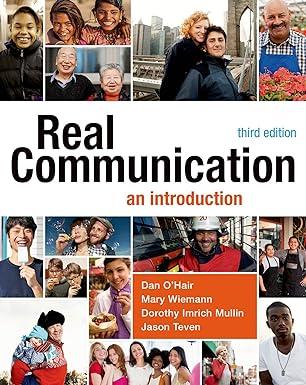(Appendices) ETHICS AND INVENTORIES. Mary Cravens is an accountant for City Appliance Corporation. One of Marys responsibilities...
Question:
(Appendices) ETHICS AND INVENTORIES. Mary Cravens is an accountant for City Appliance Corporation. One of Mary’s responsibilities is developing the ending inventory amount for the calculation of cost of goods sold each month. At the end of September, Mary noticed that the ending inventory for a new brand of televisions was much larger than she had expected. In fact, there had been hardly any change since the end of the previous month when the shipment of televisions arrived. Mary knew that the firm’s advertising had featured the new brand’s products, so she had expected that a substantial portion of the televisions would have been sold. Because of these concerns, Mary went to the warehouse to make sure the numbers were correct. While at the warehouse, Mary noticed that 30 of the televisions in question were on the loading dock for delivery to customers and another, larger group, perhaps 200 sets, were in the area set aside for sales returns. Mary asked Barry Tompkins, the returns supervisor, why so many of the televisions had been returned. Barry said that the manufacturer had used a cheap circuit board in one part of the set and that on most of the sets the board failed after it had been in service for a week or two. Mary then asked how the defective televisions had been treated when the inventory was taken at the end of September. Barry said that the warehouse staff had been told to include in the ending inventory any item in the warehouse that was not marked for shipment to customers. Therefore, all returned merchandise was considered part of ending inventory. Mary asked Barry what would be done with the defective sets. Barry said that they would probably have to be sold to a liquidator at a few cents on the dollar. Mary knew from her examination of the inventory data that all the returned sets had been included in the September inventory at their original cost. Mary returned to the office and prepared a revised estimate of ending inventory using the information Barry Tompkins had given her to revalue the ending inventory of the television sets. She submitted the revision along with an explanatory note to her boss, Susan Grant. A few days later, Susan stopped by Mary’s office to report on a conversation with the chief financial officer, Herb Cobb. Herb told her that the original ending inventory amount would not be revised. Herb said that the television sets in question had been purchased by the owner’s brother and that no one was prepared to be associated with a document that reflected negatively on the owner’s brother. LO5 REQUIRED:
1. What would happen to cost of goods sold, gross margin, income from operations, and net income if the cost of the returned inventory had been reduced to its liquidation price as Mary had proposed?
2. What should Mary do now?
Step by Step Answer:

Real Communication An Introduction
ISBN: 9781457662928
3rd Edition
Authors: Dan O'Hair, Mary Wiemann, Dorothy Imrich Mullin






